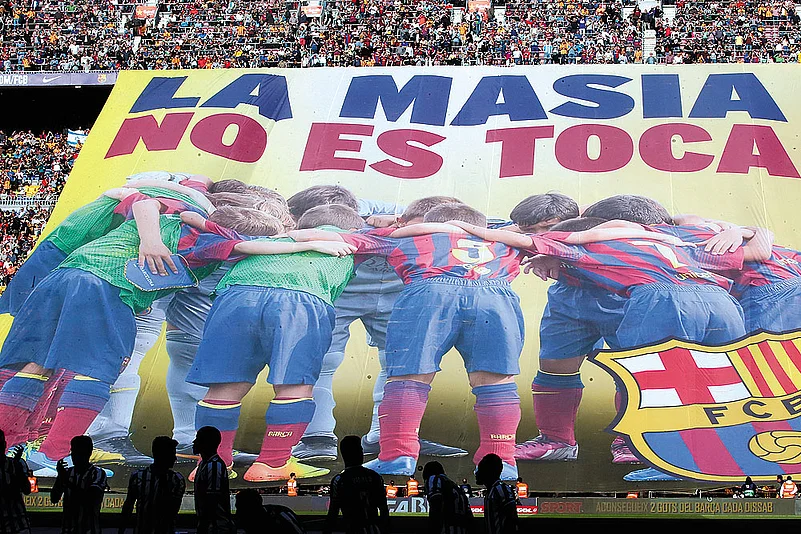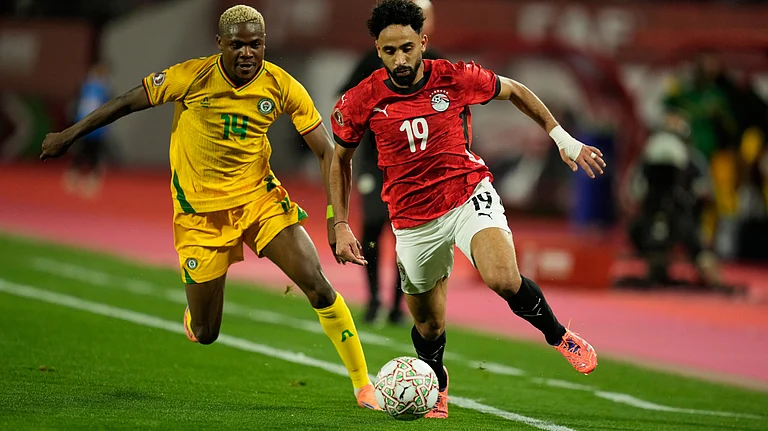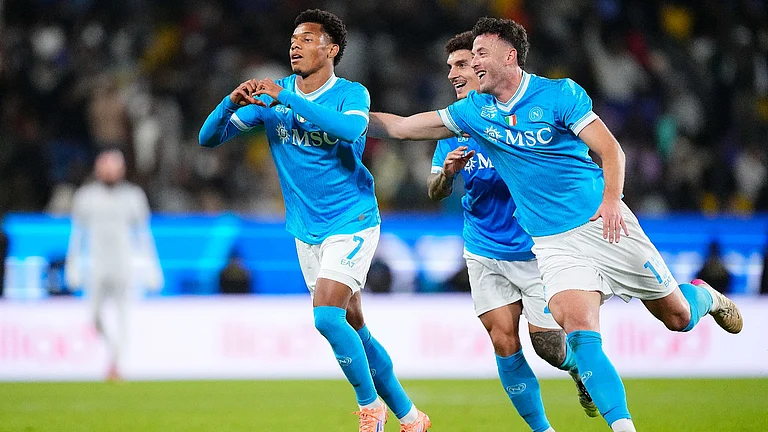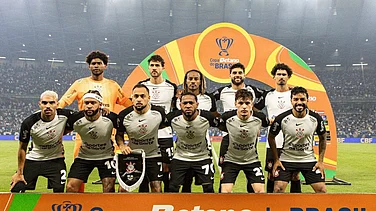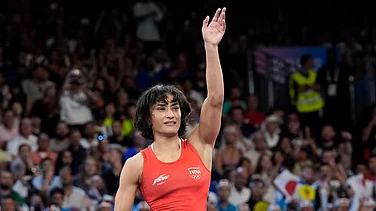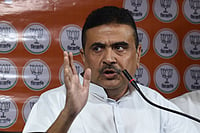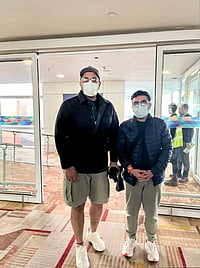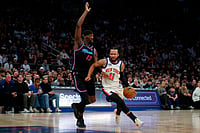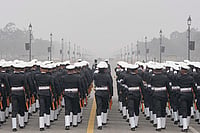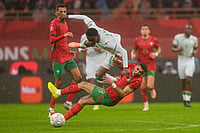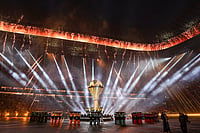In-house development of young talent has always been an extremely important issue for major football clubs around the world. At the World Cup, we see players who have come through the best football academies on the globe, and it’s time to take a look at the strategies of these institutions. The most famous youth academy is La Masia of FC Barcelona. Established back in 1979, its goal is to provide the backbone of the club’s line-up. Their success was especially evident during the last decade, when most of Barcelona’s first team players came from those raised at La Masia—most notably Leo Messi, Xavi, Andres Iniesta, Victor Valdes, Carles Puyol, Gerard Pique, Cesc Fabregas, Sergio Busquets, Pedro Rodriguez and Jordi Alba. Most of them played a very significant part at the World Cup in South Africa four years ago, with the Spanish contingent winning the trophy. All three contenders for Ballon d’Or in 2010—Messi, Iniesta and Xavi—were La Masia graduates. Seven players from the academy played in the Champions League final in 2011, and won it.
The club puts great emphasis on continuity. Many academy coaches are La Masia graduates themselves, and that’s how the late Tito Vilanova started his coaching career, winning trophies with a U-14 team that included the likes of Messi, Pique and Fabregas. He later became assistant to Pep Guardiola, another famous La Masia graduate, and the pair coached the second team (Barcelona B) before being promoted to the first team and creating one of the best teams in history. It is a written rule that all Barcelona teams, at all ages, must use a 4-3-3 formation, basing their play on possession football. The roots were laid down by the Dutch greats Rinus Michels and Johan Cruyff, and Barcelona keep the style intact, constantly evolving the system. The most desired football qualities of students that are developed at La Masia are good technique, speed and—most importantly—vision of the game. The first team follows the style of play of the youth teams, which means that all the players who come through the system are trained to perform at world-class level, so that the transition becomes as seamless as possible. There are strict appearance rules, as children are forbidden from having tattoos, earrings and coloured hair, and they must play with shirt tucked into shorts. As Albert Puig, head of the Youth Academy, puts it: “The first mission of coaches is to help boys with their behaviour, and only the second is to show them how to be good players.”

At Alcochete: Cristiano Ronaldo in training
The immaculate facilities include eight football pitches. The recent project was launched in 2000, and the youth development part of the club moved there in 2006, with the first team following in 2009. Annual costs of the academy, including the Barcelona B team that plays professionally in the lower leagues, is estimated at 30 million euros, but that investment pays off handsomely because the club doesn’t have to purchase a lot of stars at huge transfer fees elsewhere—the very fact that they have got Messi at no additional cost tells the whole story.
Seventy per cent of the students are Catalan, whereas 20 per cent come from other parts of Spain, and some 10 per cent are foreigners. The latter part caused the club problems lately, as FIFA rules prohibit taking children under the age of 18 to a foreign country. Barcelona currently have a trio of youth players from South Korea, including the talented 15-year-old striker Lee Seung Woo, as well as players from Africa, mostly Cameroon, who came through cooperation with the local academy established by its striker Samuel Eto’o. Barcelona were originally banned from transfers for the next year, but that decision has been postponed, subject to appeal.
La Masia has been so successful that other clubs are trying to learn from their experience. That is why Manchester City, who became a top club with almost limitless financial resources after being purchased by the Abu Dhabi United Group in 2008, signed former Barcelona director of football Txiki Begiristain in the same capacity. One of his most important missions is to implement what is called “common football” philosophy that links the youngest academy boy to the most senior first-team player. The City Football Academy is only being developed for a few years, and there are no graduates in the first team yet, forcing City to buy elsewhere, but they will most probably see the seeds bear fruit soon.
We know where Messi learned his football, but what about Cristiano Ronaldo? You might be surprised that the best academy in Portugal doesn’t belong to the giants of Benfica and FC Porto, but rather to Sporting Lisbon, who are traditionally considered the third club in the country, and haven’t won the league title since 2002. The reason is simple—Sporting don’t have the financial power to keep the youngsters they develop.
Their training centre is based in the neighbourhood of Alcochete, and the club uses no less than 160 scouts to find the most talented children. About 340 boys are studying at the academy, and during the last decade it has developed more than 100 professional footballers. The club makes every effort to keep the studies at the highest level possible. Youth coaches must be former players with academic background, and they have autonomy to invent their own training sessions, but the tactics are supposed to be 4-3-3, just like at Barcelona, which would explain why Sporting have produced so many talented wingers over the years.
The annual costs of the academy to the club stand at about five million euros, and since 2002 the club obtained more than 100 million in transfer fees for players it sold. The bottomline is very clear—the Alcochete school is the reason Sporting survive and are financially stable. “We are the only club that has trained and developed two World Players of the Year—Luis Figo and Cristiano Ronaldo,” says Diogo Matos, Head of Youth Academy. There were eight Sporting academy graduates in the Portugal squad at Euro 2012, and the same number is now at the World Cup in Brazil, including the midfield stalwarts Joao Moutinho and Miguel Veloso, and Manchester United winger Nani.
Another club that fully understands the importance of youth development is Bayern Munich, who sent five home-grown players to the Germany squad for the World Cup, including captain Philipp Lahm, star midfielder Bastian Schweinsteiger and top scorer at the previous tournament, Thomas Muller. Putting emphasis on young local players will probably enable Bayern to avoid mistakes like the one they made when letting talented centre-back Mats Hummels leave to Borussia Dortmund in 2008. “With our academy, we have built the future of our club. Bayern will always buy players elsewhere, but we want the basis to be coming from our academy, because such players fully identify themselves with the club,” says Bayern president Karl Heinz Rummenigge. About 90 per cent of the youngsters at the academy were born in Bavaria, which helps to keep local identity.

Scouse Patch: An Under-18 match in progress at the Liverpool FC Academy. (Photograph by Getty Images, From Outlook 07 July 2014)
A country especially famous for their youth academies is Holland. Ajax Amsterdam and Feyenoord Rotterdam have always been based on locally trained youngsters, and the squad chosen by national coach Louis Van Gaal for the World Cup proves that once again.
Van Gaal famously won the Champions League title in 1995 with a team full of youngsters from Ajax academy, so he knows the system better than anyone. They aspire to promote at least three players to the first team every two years. It is the most popular academy in the country, and every young footballer dreams of being part of it. For example, Wesley Sneijder was born in Utrecht, but went to Amsterdam at the age of seven, just as his two brothers who were not as talented. Nigel de Jong is another veteran who graduated from Ajax academy, and the younger generation representatives are Daley Blind and Joel Veltman. Remarkably, though, they were outstaged by Feyenoord Rotterdam this time. The Rotterdamers, who were on the verge of financial collapse a few years ago, were forced to rely on their youth academy for players, and the results were remarkable. The system followed at the academy develops high-quality players on a yearly basis, and they thrived when given an opportunity to prove themselves in the first team earlier than expected. Feyenoord finished second in the league for two years in succession, and sent eight academy graduates to the preliminary squad ahead of the World Cup.
Six of them have made the final cut, and for the first time since 1974, there is no club that has more players in the Dutch squad than Feyenoord. You are advised to follow the performances of Daryl Janmaat and Bruno Martins Indi who are reportedly targeted by Van Gaal himself at Manchester United.
United have developed the most respected academy in England, and they famously produced the Class of 1992, with David Beckham, Ryan Giggs, Paul Scholes and the Neville brothers. This time, however, they only have one academy graduate in the England World Cup squad—striker Danny Welbeck. Somewhat surprisingly, the most successful English academy lately belongs to Southampton. It produced Theo Walcott who misses the tournament through injury, Alex Oxlade Chamberlain who plays alongside him at Arsenal and young left back Luke Shaw—another Van Gaal target at United. The list must be completed with the most expensive player ever, Real Madrid’s Welsh star Gareth Bale. The Southerners were, like Feyenoord, in desperate financial crisis just a few years ago, but the academy allowed them to survive and flourish. From Barcelona to Southampton, the lessons of youth development are pretty similar. It is very worthwhile.
Michael Yokhin is an experienced European football writer. He writes a column for ESPN FC and other papers.






